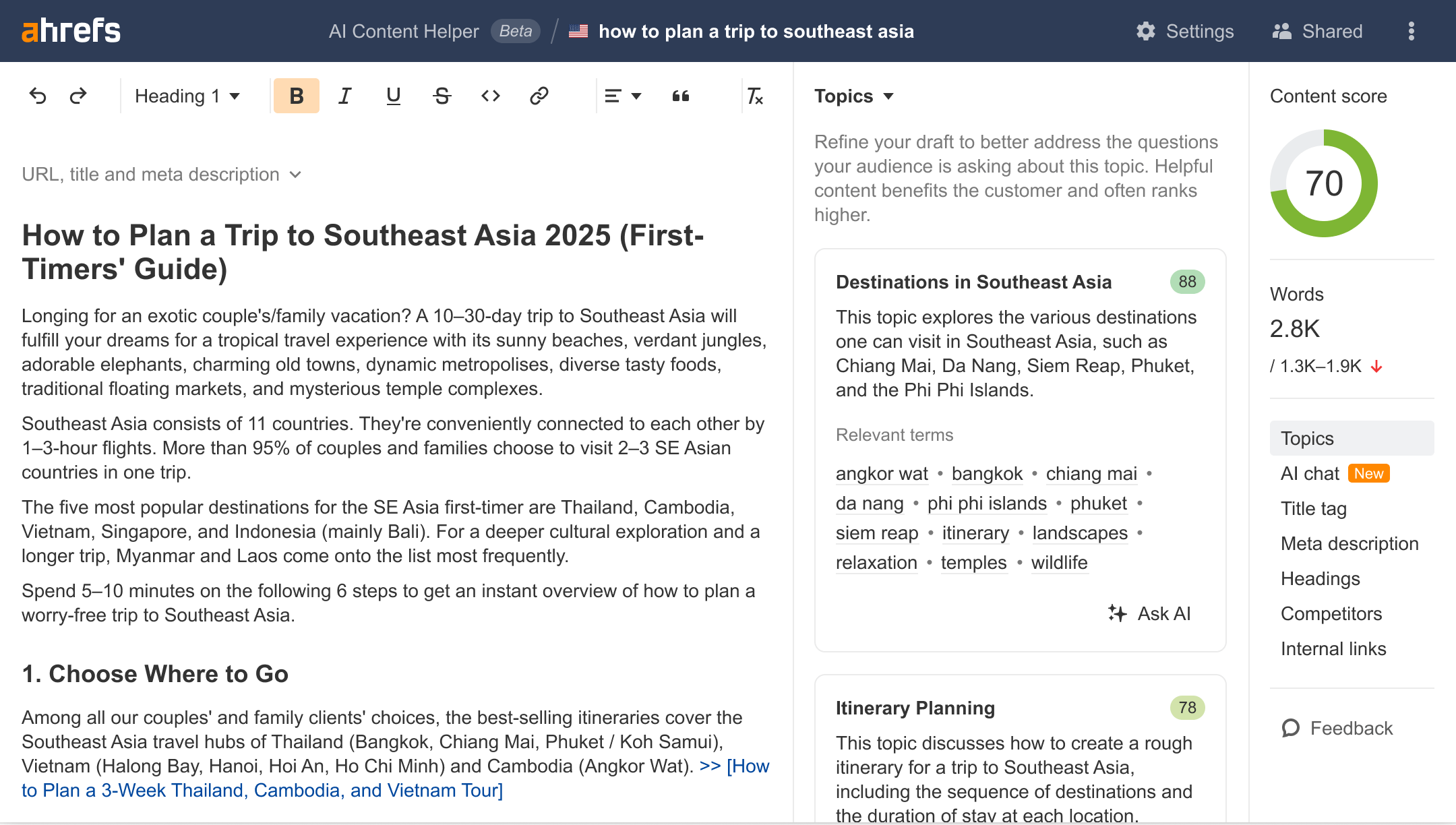AI Content Helper
Create content that’s built to rank
No writing expertise needed. Match search intent, fill in content gaps, and improve your writing.

Most content today is arbitrage, moving information from one place to another. To rank higher in search results, your content needs to be:
Helpful
Show E-E-A-T (Expertise, Experience, Authority, Trust) in the eyes of Google.
Relevant
Answer the searcher’s query and contain other relevant terms beyond the main search.
People-first
Match what people are actually searching for, while also optimizing for search engines.
Most content today is arbitrage, moving information from one place to another. To rank higher in search results, your content needs to be:
Cut down on manual research. Learn what content performs best from the get-go.
Match search intent with confidence
Our AI detects multiple search intents for your keyword, helping you align content with top ranking pages and write about what your audience wants.
Streamline content creation with a content editor that acts like a real writing assistant.
Cover every angle that matters
AI Content Helper grades your content against top-ranking pages—so you can spot topical coverage gaps and fill them naturally.
Boost content relevance
Google rewards articles that contain information other articles don't. Spot poorly-covered topics and get word-for-word tips on how to boost content depth and authority.
Get surfaced in AI search
Color-code sentences based on the subtopics covered to boost your AI visibility.
Chat with AI
Ever wanted a peer reviewer that could do more than just proofread? Chat with our AI to get actionable feedback, brainstorm ideas, and pick holes in your content.
Cure writer's block once and for all
Keep your creative juices flowing. Use the "Ask AI" feature in-line to rephrase, summarize, or expand on the selected text.
Ready to hit publish? Make sure your content is SEO optimized as a final check.
Get click-worthy titles and description in seconds
Stand out in search results. Craft irresistible snippets that searchers actually want to click – using AI or inspiration from competitors.
Structure content headings like a pro
Discover how top-ranking articles structure their headings. Use those insights to make your own content easier to read and skim through.
Stay on brand, all the time
Create a Brand Kit from existing articles to keep AI writing consistent with your brand's tone and style.
Optimized for scale, reach, and sharing
Go global? No problem. AI Content Helper supports 173+ languages – covering both SERPs and AI prompts.
Share access. Invite team members* to collaborate on the same document.
*Available for Enterprise accounts only
Enhance your content even further
AI Content Helper is included in Content Kit—our powerful set of paid add-ons designed to supercharge your content optimization. Available with all new Ahrefs paid plans.
Content Kit
Align your content with search intent, uncover and apply competitor insights to your advantage, and get clear guidance to refine your writing.
More reasons to use Ahrefs as your go-to marketing platform
Find valuable keywords for any niche
Generate thousand of keyword ideas
Cluster topics by parent topic or related terms
Use reliable metrics to pick the best ones
Get more traffic from socials, on autopilot
Auto-post fresh content to all major social platforms
Customize visuals, text, and timing for each network
Track performance and refine your strategy with insights
Available for free with AWT: 3 channels and 10 posts/month